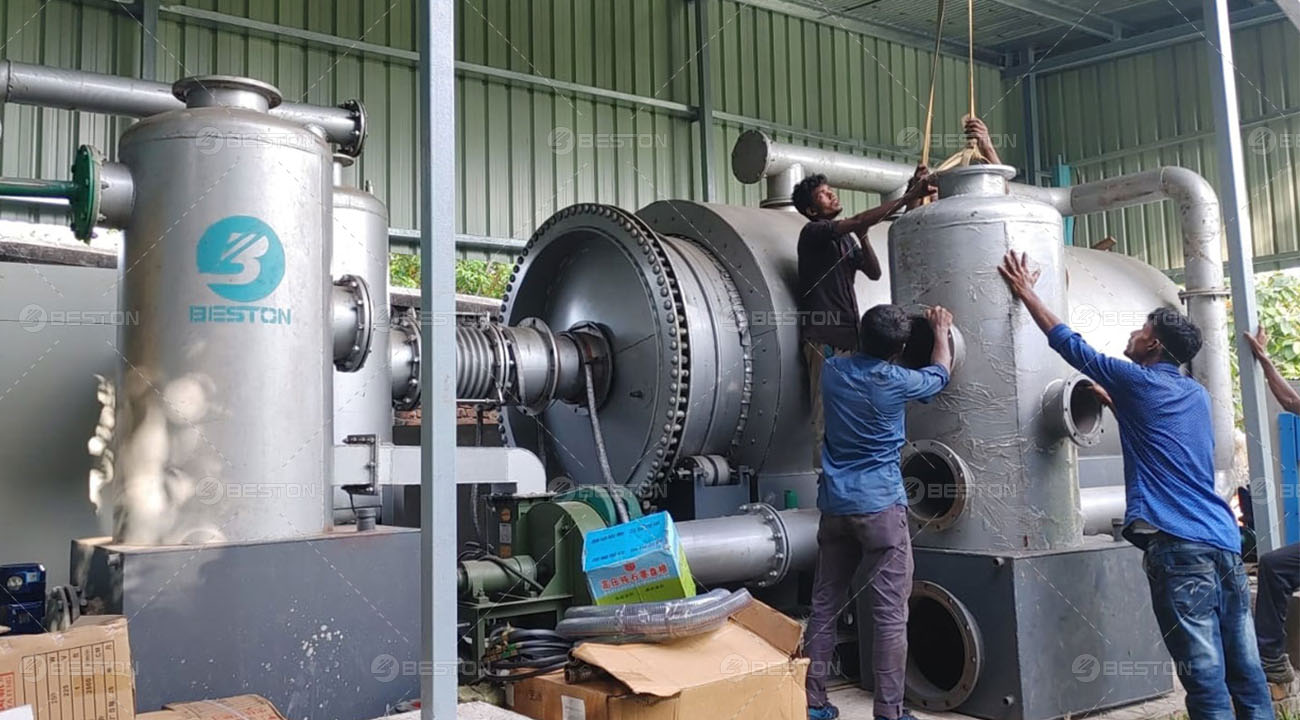Introduction
In an era driven by environmental consciousness and sustainable waste management, the relevance of pyrolysis plants has surged. This article delves into the world of pyrolysis plants for sale, uncovering the mechanisms, advantages, and factors that shape this growing market.
Understanding Pyrolysis Technology
Pyrolysis Process Fundamentals
The heart of pyrolysis machine lies in thermal decomposition, a process that converts organic materials into valuable end-products. This chemical transformation occurs in the absence of oxygen, allowing for the creation of bio-oil, biochar, and syngas, all of which find applications across industries.
- Thermal Decomposition of Organic Materials: Pyrolysis involves subjecting materials such as plastic waste, tires, or biomass to elevated temperatures, resulting in the breakdown of complex molecules.
- Yield of Valuable End-Products: The pyrolysis process yields bio-oil, biochar (a carbon-rich solid), and syngas (a mixture of gases), each holding economic and environmental value.
Types of Pyrolysis Plants
Pyrolysis plants come in various forms, differing in operational mechanisms and configurations. The choice between batch and continuous pyrolysis and the design of reactors significantly impact their efficiency and production capacity.
- Batch vs. Continuous Pyrolysis: Batch pyrolysis is characterized by intermittent loading and unloading of feedstock, while continuous pyrolysis operates as a steady, uninterrupted process.
- Reactor Designs and Configurations: The design of pyrolysis reactors can vary, influencing the overall yield, energy efficiency, and ease of maintenance.
Factors Influencing Pyrolysis Plant Selection
Feedstock Considerations
The choice of feedstock is a critical decision, as it determines the types and quality of end-products produced. Pyrolysis plants can process a range of materials, from plastic waste to tires and biomass.
- Plastic Waste, Tires, Biomass, and More: The feedstock selection is vast, with different materials offering distinct benefits and challenges.
- Quality and Quantity of Feedstock: The condition and quantity of feedstock significantly impact the efficiency and profitability of the pyrolysis process.
Plant Capacity and Scale
Pyrolysis plants come in various sizes, from small-scale units suitable for localized operations to industrial plants with substantial production capacities.
- Small-Scale vs. Industrial Pyrolysis Plants: Small-scale plants are suited for niche applications, while industrial plants cater to large-scale waste management needs.
- Throughput and Production Capabilities: The throughput capacity and overall production capabilities are essential considerations when selecting a pyrolysis plant.

Environmental and Economic Implications
Environmental Sustainability
Pyrolysis plays a pivotal role in reducing waste and lessening the burden on landfills. It also contributes to greenhouse gas emission mitigation, aligning with global sustainability goals.
- Reduced Waste and Landfill Burden: Pyrolysis diverts organic waste from landfills, decreasing environmental harm.
- Mitigation of Greenhouse Gas Emissions: The process helps curb the release of greenhouse gases, making it a sustainable waste management solution.
Economic Viability
The economic aspects of pyrolysis are equally compelling, with revenue generated from the sale of end-products and favorable return on investment.
- Revenue from End-Products: The sale of bio-oil, biochar, and syngas can provide a reliable income stream.
- Return on Investment (ROI): The potential for a positive ROI makes pyrolysis an attractive investment in the sustainable waste management sector.
Sourcing Pyrolysis Plants
New vs. Used Equipment
When considering a pyrolysis plant for sale, one must weigh the advantages and drawbacks of acquiring new or used equipment. The choice profoundly influences the initial investment and operational efficiency.
- Benefits and Drawbacks of Each Option: New equipment offers modern features and warranties, while used equipment may present cost savings but potential maintenance concerns.
- Evaluating the Condition of Used Plants: A thorough assessment of used equipment is crucial to ensure it meets operational requirements and safety standards.
Reliable Manufacturers and Suppliers
The reputation of the manufacturer or supplier is an essential factor in acquiring a pyrolysis plant. A trustworthy provider ensures product quality and after-sales support.
- Assessing Reputation and Track Record: Researching the manufacturer’s history and customer reviews helps gauge their reliability.
- Warranty and After-Sales Support: A reputable provider should offer warranties and comprehensive after-sales support to address maintenance and troubleshooting needs.
Conclusion and Future Prospects
The Role of Pyrolysis in Sustainable Practices
Pyrolysis plants for sale represent a significant step toward sustainable waste management. The technology’s ability to reduce waste, mitigate emissions, and generate valuable products positions it as a vital contributor to sustainable practices.
Ongoing Developments and Market Trends
As the world embraces more sustainable practices, the market for pyrolysis plants is expected to grow. Ongoing technological developments and market trends will continue to shape the future of pyrolysis in waste management and environmental conservation.

Comments
No comments yet. Be the first to react!